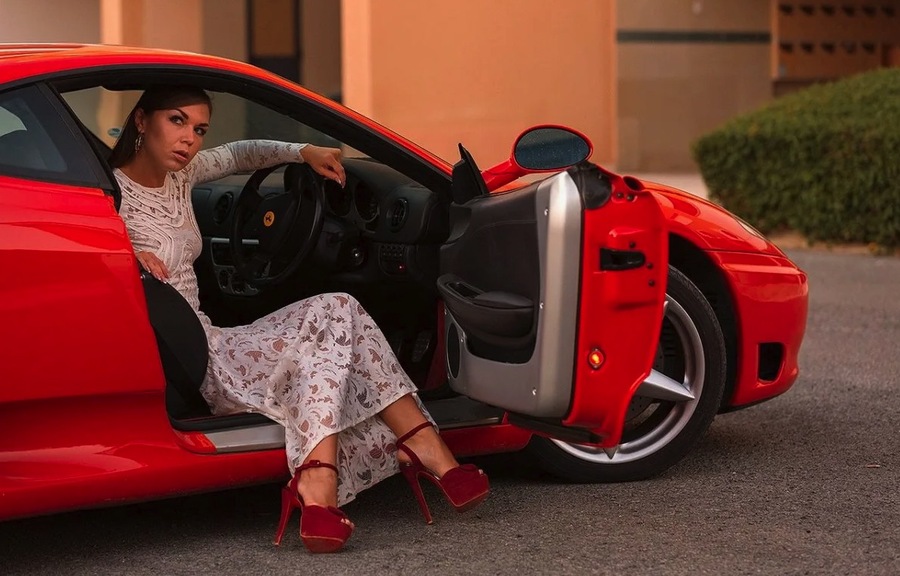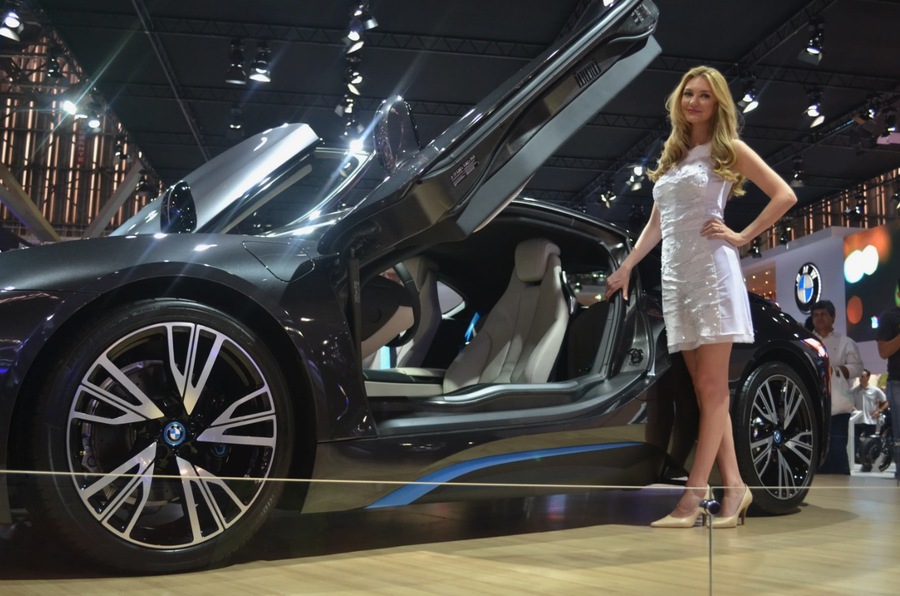The supercar industry, characterized by high-performance, luxury automobiles, has long been dominated by men. Historically, the design, engineering, and driving of these powerful machines were seen as male pursuits, with women relegated to the periphery. For instance, a study by the International Organization of Motor Vehicle Manufacturers (OICA) found that as recently as the early 2000s, less than 10% of the workforce in the automotive engineering field were women.
Increasing Impact of Women in Various Roles within the Supercar Domain
In recent years, however, there has been a significant shift. According to a 2020 report by the Automotive News, the percentage of women in automotive engineering roles has increased to 17%, and in executive roles within automotive companies, women now hold 24% of the positions. Women are breaking through the barriers of this traditionally male-dominated industry, taking on roles as drivers, designers, engineers, entrepreneurs, and executives. Their growing presence is not only challenging gender stereotypes but also bringing fresh perspectives and innovations to the supercar world.
Trailblazers: Pioneering Women in Supercars
Early Involvement of Women in the Automotive Industry
Women have been part of the automotive story since its inception, even if their contributions have often been overlooked. In the early 20th century, women like Bertha Benz, who undertook the first long-distance car trip in 1888, and Alice Ramsey, the first woman to drive across the United States in 1909, began to carve out their place in automotive history.
Profiles of Early Female Pioneers in Supercar Racing and Design
Pioneers such as Denise McCluggage, an accomplished journalist and race car driver, and Hellé Nice, a French model turned Grand Prix driver in the 1930s, blazed trails in the racing world. McCluggage won the Grand Touring category at the Sebring 12 Hours in 1961, while Nice competed in over 70 Grand Prix races, winning multiple times.
Evolution of Women’s Roles in Automotive Design and Racing
Over the decades, the roles of women in the automotive industry have evolved significantly. In the 1970s, less than 3% of automotive engineers were women. Today, women hold nearly 20% of engineering roles in the industry, contributing to the development of some of the most iconic supercar models. This evolution reflects broader societal changes and the growing recognition of women’s capabilities and contributions.
The Rise of Female Supercar Drivers
Profiles of Prominent Female Supercar Drivers
Prominent female drivers such as Danica Patrick, Susie Wolff, and Leilani Münter have made significant impacts in the world of supercar racing. Danica Patrick, known for her achievements in both IndyCar and NASCAR, has become a household name and a symbol of female empowerment in motorsports. She is the only woman to have won an IndyCar race, achieving victory at the 2008 Indy Japan 300.
Achievements and Records Set by Women in the Supercar Racing World
Women drivers have achieved remarkable milestones, including podium finishes, race wins, and record-breaking performances. For example, Michèle Mouton, who competed in the World Rally Championship, became the first woman to win a world championship rally in 1981, showcasing the high-level capabilities of female drivers in the supercar realm.
Challenges Faced by Women in This High-Speed, High-Risk Sport
Despite their successes, women in supercar racing face numerous challenges, including gender biases, limited sponsorship opportunities, and a lack of representation. According to the Women in Motorsport Commission, only 5% of licensed motorsport participants are women, highlighting the need for greater inclusivity and support.

Women in Supercar Design and Engineering
Highlighting Influential Female Designers and Engineers
Women like Mary Barra, CEO of General Motors, and Michelle Christensen, the lead exterior designer for the second-generation Acura NSX, have significantly influenced the design and engineering of supercars. Barra, for example, has overseen the development of multiple innovative vehicle models, and under her leadership, GM has committed to a future of zero emissions.
Key Contributions to Iconic Supercar Models
Female designers and engineers have played key roles in the development of iconic supercars. For instance, the work of women on the team that developed the Bugatti Veyron, one of the most celebrated supercars, highlights the importance of gender diversity in creating innovative and high-performance vehicles.
Initiatives and Programs Encouraging More Women to Enter Automotive Engineering
Various initiatives, such as the Women in Engineering program by the Society of Automotive Engineers (SAE) and scholarships from organizations like the Automotive Women’s Alliance Foundation, are encouraging more women to pursue careers in automotive engineering. These programs aim to reduce gender disparities and foster a more inclusive industry. In 2021, the SAE reported a 15% increase in female participation in their engineering programs.
Women Entrepreneurs and Executives in the Supercar Industry
Success Stories of Women Leading Supercar Companies and Dealerships
Women entrepreneurs and executives, such as Margery Krevsky, founder of Productions Plus, and Linda Jackson, CEO of Peugeot, have made significant strides in the supercar industry. Their leadership is driving innovation and reshaping company cultures to be more inclusive and dynamic.
The Impact of Female Leadership on Company Culture and Innovation
Female leaders bring unique perspectives and leadership styles that often emphasize collaboration, sustainability, and customer-centric approaches. According to a study by McKinsey & Company, companies with gender-diverse leadership teams are 21% more likely to outperform their competitors in profitability. Their impact on company culture and innovation is evident in the progressive strategies and practices adopted by their organizations.
Case Studies of Women Transforming Business Strategies in the Supercar Market
Case studies, such as that of Renée Brinkerhoff, founder of Valkyrie Racing, illustrate how women are transforming business strategies in the supercar market. Brinkerhoff’s success in combining racing with philanthropy showcases the diverse ways women are influencing the industry. Her Project 356 World Rally Tour, which aims to race on all seven continents to raise awareness for human trafficking, exemplifies how women are using their platforms for social impact.
Media Representation and Cultural Impact
Analysis of Women’s Portrayal in Supercar Advertisements and Media
The portrayal of women in supercar advertisements and media has evolved, from being mere accessories to the cars to being recognized as knowledgeable and passionate enthusiasts and professionals. A study by the Geena Davis Institute on Gender in Media found that in the past decade, the representation of women in automotive ads has increased by 35%, reflecting broader cultural changes towards gender equality and the breaking down of stereotypes.
The Role of Social Media in Empowering Women Supercar Enthusiasts
Social media platforms have empowered women supercar enthusiasts by providing a space to share their passion, connect with like-minded individuals, and challenge traditional gender roles. Influencers and communities on platforms like Instagram and YouTube are reshaping the narrative around women in supercars. According to a 2020 survey by Influencer Marketing Hub, women automotive influencers have seen a 20% increase in followers annually, highlighting their growing influence.
Cultural Shifts and Changing Perceptions of Women in the Automotive World
The increasing visibility and achievements of women in the supercar industry are contributing to cultural shifts and changing perceptions. Women are now seen as integral to the automotive world, not only as drivers and designers but also as leaders and innovators. A 2021 survey by Deloitte revealed that 47% of automotive industry professionals believe that gender diversity in their organizations has significantly improved in the last five years.
Overcoming Challenges: Stories of Resilience
Common Stereotypes and Biases Faced by Women in the Supercar Industry
Women in the supercar industry often face stereotypes and biases, such as assumptions about their technical abilities or commitment to the field. These challenges can hinder their progress and opportunities but are being actively confronted by individuals and organizations advocating for gender equality. According to a 2019 study by the International Labour Organization (ILO), 54% of women in the automotive industry reported experiencing gender bias.
Stories of Resilience and Overcoming Obstacles
Stories of resilience, such as that of racer Simona de Silvestro, who overcame significant physical and professional hurdles to succeed in motorsports, inspire and motivate others. De Silvestro has competed in multiple prestigious racing series, including Formula E and IndyCar, proving her prowess and determination. These narratives highlight the determination and strength of women in the supercar industry.
Discussions on How to Create a More Inclusive and Supportive Environment
Creating a more inclusive and supportive environment involves addressing systemic issues, providing mentorship, and fostering a culture of respect and equality. Efforts such as diversity training and inclusive policies are crucial in driving this change. Organizations like the Women in Automotive Network (WIN) advocate for these changes and provide resources and support for women in the industry.
Women-Led Supercar Events and Communities
Overview of Events and Organizations Promoting Women in Supercars
Events like the Rebelle Rally and organizations such as the Women in Motorsports Commission promote the participation and recognition of women in the supercar industry. The Rebelle Rally, for instance, is the first women’s off-road navigation rally raid in the United States, attracting hundreds of participants and showcasing their skills.
Testimonials from Participants and Organizers
Participants and organizers of women-led supercar events often share testimonials about the positive impact of these experiences. They emphasize the importance of community support and the sense of empowerment gained from being part of such initiatives. According to feedback from the Rebelle Rally, 95% of participants reported a significant boost in confidence and skill development.
The Significance of Community Support and Networking for Women in the Industry
Community support and networking are vital for women in the supercar industry. They provide resources, mentorship, and a sense of belonging that can help women navigate challenges and advance their careers. Networks like the Women in Automotive Network (WIN) have grown by 30% annually, indicating a rising demand for such supportive communities.
Additionally, car rental agencies such as House of Luxury provide a chance for all female supercar fanatics to enjoy the ride with a premium fleet of luxury cars for rent, enhancing access and experience for women enthusiasts. This addition ensures that more women can engage with and enjoy the supercar world, further promoting inclusivity and passion for high-performance vehicles.
Future Prospects: Encouraging the Next Generation
Educational Programs and Scholarships for Young Women Interested in Automotive Careers
Educational programs and scholarships, such as those offered by the Automotive Hall of Fame and the Society of Women Engineers, are critical in encouraging young women to pursue automotive careers. These opportunities help bridge the gender gap and foster the next generation of female automotive professionals. In 2022, the Society of Women Engineers reported a 40% increase in scholarship applications from young women aspiring to enter the automotive field.
Mentorship Programs and Their Importance
Mentorship programs connect aspiring women with experienced professionals who can provide guidance, support, and opportunities. These relationships are invaluable in helping women navigate their careers and achieve their goals. According to a report by Mentorloop, mentees are five times more likely to advance in their careers than those without mentors.
Predictions for the Future Landscape of Women in the Supercar Industry
The future landscape of women in the supercar industry looks promising, with increasing representation and opportunities across all roles. As more women enter and succeed in the industry, they will continue to drive innovation, challenge stereotypes, and inspire future generations. A McKinsey report predicts that by 2030, women could make up 30% of the workforce in the automotive industry, significantly impacting its dynamics and growth.
Conclusion
Women have made significant progress in the supercar world, breaking barriers and redefining roles across all aspects of the industry. Their contributions are reshaping the supercar landscape and challenging long-held gender norms.
The future of women in the supercar industry is bright, with increasing opportunities and recognition. As women continue to defy norms and redefine roles, they will play a crucial role in driving the industry forward into a more inclusive and innovative era.

I graduated from the California Institute of Technology in 2016 with a bachelor’s degree in software development.

